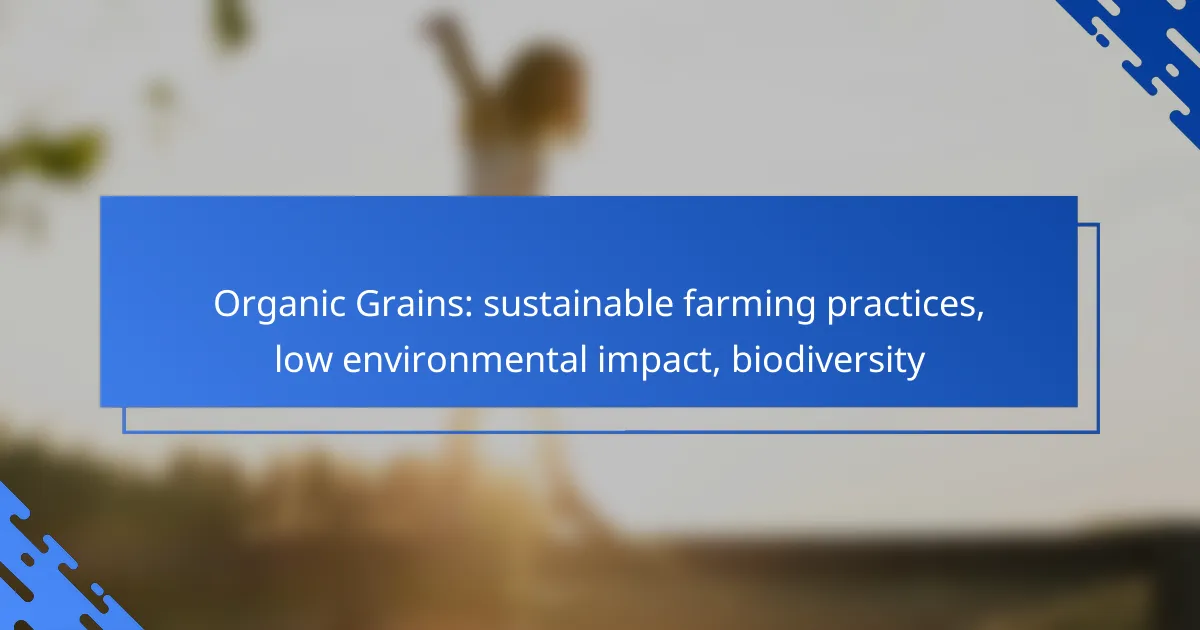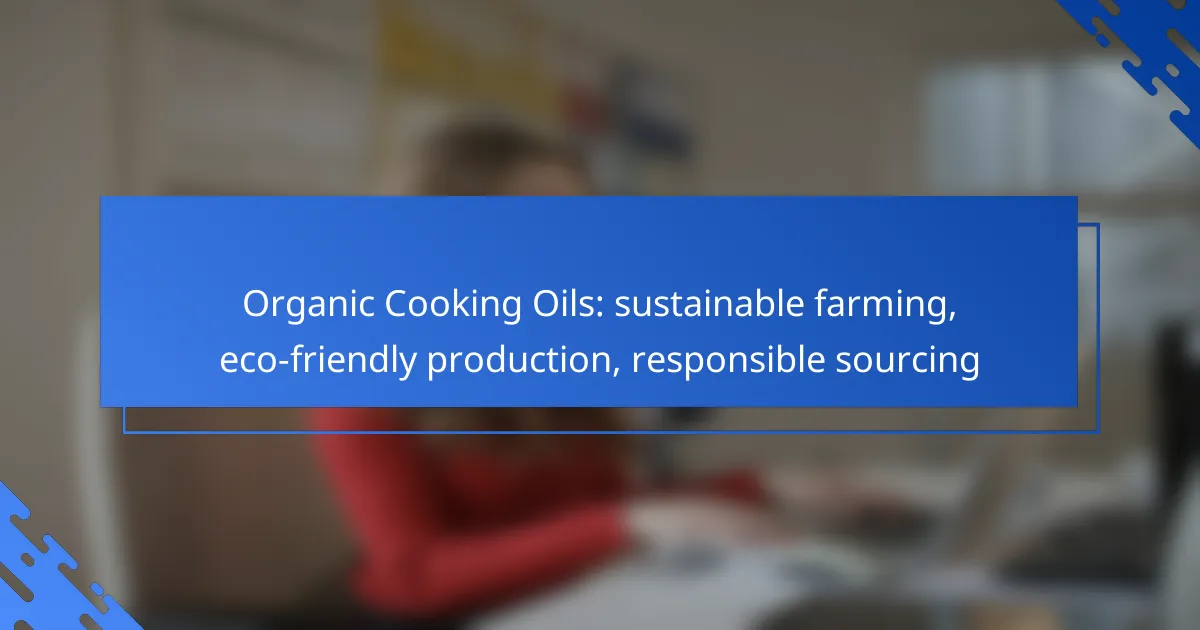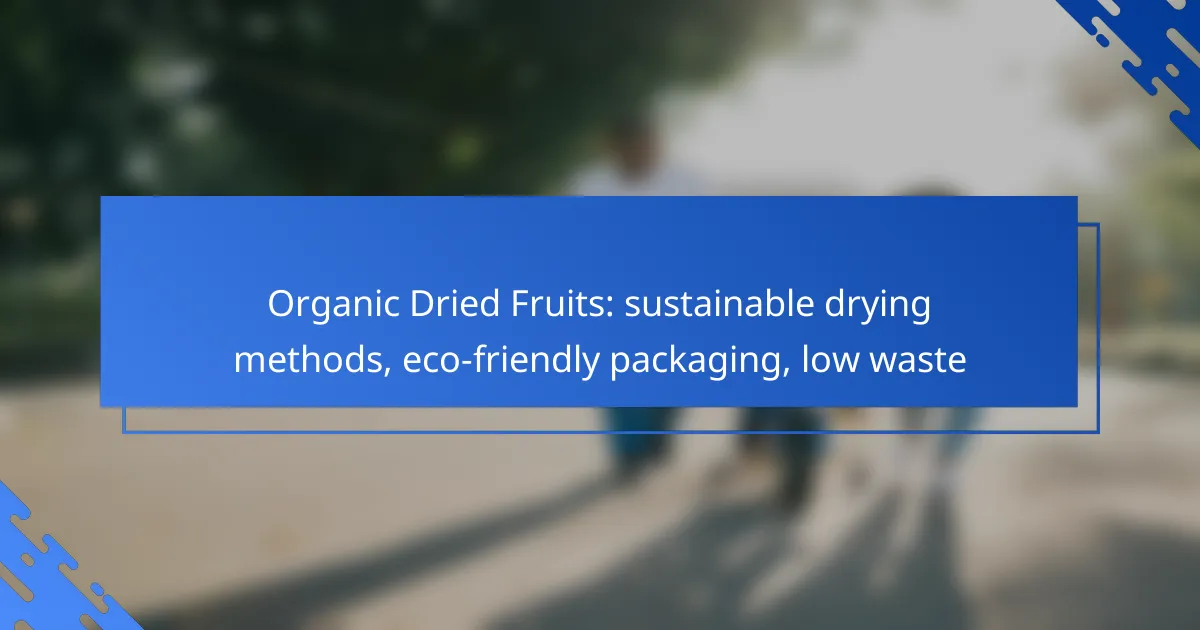Organic grains are cultivated through sustainable farming practices that prioritize ecological balance and biodiversity. By minimizing chemical inputs and enhancing soil health, these methods significantly reduce environmental impact while fostering healthier ecosystems. Embracing organic grain farming not only conserves resources but also supports a diverse array of plant and animal life, contributing to a more resilient agricultural landscape.

How do organic grains promote sustainable farming practices?
Organic grains support sustainable farming practices by enhancing biodiversity, reducing environmental impact, and promoting soil health. These methods prioritize ecological balance and resource conservation, leading to healthier ecosystems and agricultural systems.
Crop rotation benefits
Crop rotation is a key practice in organic farming that involves alternating different crops in the same area across seasons. This technique helps prevent soil depletion and reduces pest and disease cycles, which can lead to higher yields over time. For example, rotating legumes with grains can naturally enhance soil nitrogen levels, benefiting subsequent crops.
Farmers can implement crop rotation by planning a diverse planting schedule that includes various species. This not only improves soil fertility but also encourages a wider range of beneficial insects and microorganisms, contributing to overall farm resilience.
Reduced chemical usage
Organic grain farming minimizes or eliminates the use of synthetic fertilizers and pesticides, which can harm the environment and human health. Instead, organic farmers rely on natural alternatives, such as compost and biological pest control, to maintain crop health. This reduction in chemical inputs leads to cleaner water sources and healthier ecosystems.
By adhering to organic standards, farmers often find that their soil becomes more fertile over time, reducing the need for chemical interventions. This practice not only benefits the environment but can also lead to cost savings in the long run.
Soil health improvement
Organic grains contribute significantly to soil health by enhancing its structure, fertility, and biodiversity. Practices such as cover cropping and reduced tillage help maintain soil integrity and prevent erosion. Healthy soil supports better water retention and nutrient availability, which are crucial for crop growth.
Farmers can improve soil health by incorporating organic matter, such as compost or manure, which boosts microbial activity and nutrient cycling. Regular soil testing can help monitor health and guide amendments, ensuring optimal conditions for organic grain production.

What are the environmental impacts of organic grain farming?
Organic grain farming significantly reduces environmental impacts compared to conventional methods. It promotes sustainable practices that enhance biodiversity, conserve resources, and lower carbon emissions.
Lower carbon footprint
Organic grain farming typically results in a lower carbon footprint due to the absence of synthetic fertilizers and pesticides. These chemicals often require energy-intensive production processes, contributing to greenhouse gas emissions.
Farmers can further reduce emissions by implementing crop rotation and cover cropping, which enhance soil health and sequester carbon. For instance, integrating legumes can fix nitrogen in the soil, minimizing the need for external inputs.
Water conservation techniques
Organic farming employs various water conservation techniques that help maintain sustainable water usage. Practices such as mulching and drip irrigation minimize water loss and ensure efficient moisture retention in the soil.
Additionally, organic farmers often utilize rainwater harvesting systems, which can significantly reduce reliance on groundwater. This approach is particularly beneficial in regions facing water scarcity, promoting resilience against drought conditions.
Reduction in soil erosion
Organic grain farming contributes to a reduction in soil erosion through practices that enhance soil structure and health. Techniques like no-till farming and the use of cover crops help protect the soil from wind and water erosion.
Maintaining a diverse crop rotation can also improve soil stability and fertility, making the land less susceptible to erosion. This is crucial for preserving topsoil, which is essential for long-term agricultural productivity and ecosystem health.

How does organic grain farming enhance biodiversity?
Organic grain farming enhances biodiversity by promoting a variety of plant species and creating healthier ecosystems. This approach minimizes chemical inputs, allowing for a more balanced interaction among flora and fauna, which supports overall ecological health.
Diverse crop varieties
Organic grain farming encourages the cultivation of diverse crop varieties, which can improve soil health and resilience against pests and diseases. By rotating different grains and incorporating legumes, farmers can enhance nutrient cycling and reduce the need for synthetic fertilizers.
For example, growing a mix of wheat, barley, and oats can attract various beneficial insects and microorganisms, fostering a more robust agricultural ecosystem. This diversity not only supports the farm’s productivity but also contributes to the preservation of local seed varieties.
Habitat preservation
Organic farms often prioritize habitat preservation, which is vital for maintaining biodiversity. By implementing practices such as leaving buffer zones around fields and preserving natural habitats, farmers can provide refuge for wildlife and beneficial organisms.
These preserved areas can include hedgerows, wetlands, and wildflower strips, which serve as habitats for birds, insects, and other wildlife. Such practices help create a balanced ecosystem that supports pollination and pest control naturally.
Pollinator support initiatives
Supporting pollinators is a key aspect of organic grain farming, as these species are essential for the reproduction of many plants. Farmers can enhance pollinator habitats by planting cover crops and flowering plants that provide food and nesting sites.
Initiatives such as creating bee-friendly zones or installing bee hotels can significantly increase pollinator populations. This not only aids in the pollination of crops but also contributes to the overall health of the ecosystem, benefiting both the farm and surrounding areas.

What are the best practices for sourcing organic grains?
To source organic grains effectively, focus on certified suppliers, prioritize local options, and ensure transparency in sourcing practices. These strategies help maintain quality, support sustainable agriculture, and reduce environmental impact.
Certification standards
Certification standards for organic grains vary by country but generally include regulations that prohibit synthetic pesticides and fertilizers. In the United States, for example, the USDA Organic certification ensures compliance with strict farming practices. Look for reputable certifications like EU Organic or USDA Organic when sourcing grains to guarantee they meet these standards.
Understanding the specific certification requirements can help you choose suppliers who adhere to sustainable practices. Always verify that the certification is current and applicable to the type of grain you are purchasing.
Local sourcing advantages
Sourcing organic grains locally offers numerous benefits, including reduced transportation emissions and fresher products. Local suppliers often have a better understanding of sustainable farming practices and can provide grains that are more aligned with regional environmental conditions.
Additionally, supporting local farmers fosters community relationships and can lead to more transparent supply chains. Consider establishing partnerships with nearby farms or cooperatives to enhance your sourcing strategy.
Supplier transparency
Supplier transparency is crucial when sourcing organic grains, as it allows you to trace the origin of the products and understand the farming practices used. Request detailed information about the grain’s journey from farm to table, including any certifications and farming methods employed.
Look for suppliers who openly share their practices and are willing to provide documentation. This transparency not only builds trust but also ensures that the grains you source align with your sustainability goals.

How do organic grains compare to conventional grains?
Organic grains differ from conventional grains primarily in their farming practices and environmental impact. Organic farming emphasizes sustainable methods, avoiding synthetic pesticides and fertilizers, which can lead to healthier ecosystems and potentially more nutritious products.
Nutritional differences
Organic grains are often considered to have higher nutritional value compared to conventional grains. Studies suggest that they may contain more antioxidants and beneficial nutrients, although the differences can vary based on the specific grain and growing conditions.
For consumers, choosing organic grains may provide additional health benefits, particularly in terms of reduced exposure to chemical residues. However, the overall nutritional difference may not be significant enough to justify the higher price for everyone.
Environmental impact comparison
Organic grains typically have a lower environmental impact than conventional grains. Organic farming practices promote biodiversity, improve soil health, and reduce pollution from synthetic chemicals. This approach can lead to healthier ecosystems and better water quality.
Moreover, organic farming often employs crop rotation and cover cropping, which can enhance soil fertility and reduce erosion. These practices contribute to long-term sustainability, making organic grains a more environmentally friendly choice.
Cost analysis
The cost of organic grains is generally higher than that of conventional grains due to more labor-intensive farming practices and lower yields. Prices can vary widely, but organic grains may cost anywhere from 20% to 100% more than their conventional counterparts.
When considering the purchase of organic grains, consumers should weigh the potential health benefits and environmental advantages against their budget. Buying in bulk or choosing local organic options can help mitigate costs while supporting sustainable agriculture.

What are the challenges of organic grain farming?
Organic grain farming faces several challenges that can impact sustainability and productivity. Key issues include pest management difficulties and market access limitations, both of which require careful consideration and strategic planning.
Pest management issues
Organic grain farmers often struggle with pest management due to the restrictions on synthetic pesticides. This can lead to higher crop losses if pests are not effectively controlled. Farmers may need to rely on natural pest control methods, such as introducing beneficial insects or using crop rotation to disrupt pest life cycles.
Additionally, maintaining soil health is crucial for organic farming, as healthy soil can enhance plant resilience against pests. Implementing practices like cover cropping and composting can improve soil quality and reduce pest pressures over time.
Market access limitations
Accessing markets for organic grains can be challenging due to stringent certification requirements and competition from conventional grains. Farmers must navigate the organic certification process, which can be time-consuming and costly, often requiring compliance with specific standards set by organizations like the USDA.
Moreover, organic grains typically command higher prices, but the market can be limited. Farmers should explore local co-ops or direct-to-consumer sales to enhance their market access and potentially increase profitability. Building relationships with local buyers can also help secure consistent sales channels.










